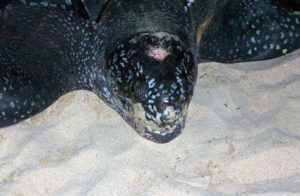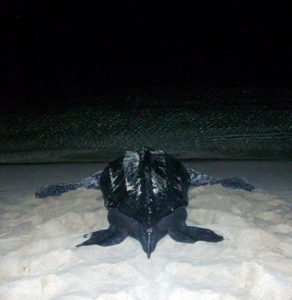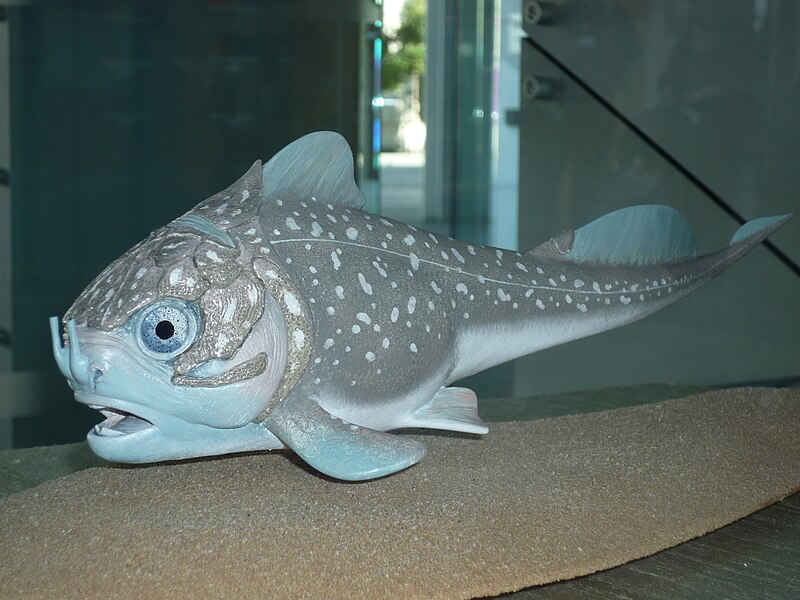A recent news article brought an old debate back to our attention here at That Fish Place – how far is too far to go to get a “unique” fish for your aquarium? The article discusses the recent trend in the Chinese aquarium market for tattooed fish believed to bring luck and prosperity to their owners. The fish in the article are Parrotfish, a fish that is already considered a hybrid of other South and Central American cichlids. These fish are being laser-tattooed with designs or Chinese characters like “luck”, “happiness”, or “May your business boom,” the article states. This tattooing is done much like that on a person and can severely damage the scales and body of the fish. I’ve seen and heard of other fish in the international aquarium trade that have been tattooed in a similar way, like Giant Gouramis and mollies.
Similarly, “Jelly Bean Parrots” have also been available in the trade. These fish are usually brightly colored in shades of green, blue, pink or purple – a process often done by first dipping the fish in an acidic solution for a short time to remove their protective slime coating, then dipping them in a dye solution. This process is not permanent and usually fades over a few months, and the mortality rates of these fish during the dying process is very high. Some other fish like tetras (some are often known as “Stained Glass Tetras” or “Painted Glass Tetras”) are also dyed in a similar way or injected with dyes to give them their bright, artificial colors.
Here at That Fish Place, we make every effort to avoid carrying fish that are the product of unethical practices like the dying or tattooing of fish but unfortunately where there is a demand, there will still be a supply in some areas. While some fish that seem unbelievably brightly colored are the product of selective breeding and are completely healthy, others have been through a lot to get that way. As a general rule: if you see a fish that doesn’t appear to be a “natural” color for that type of fish or the color seems to good to be true, ask if it is! Practices like this will only stop if we, as ethical aquarists, ban together to speak against them.
 That Fish Blog – Aquarium Advice and Information
That Fish Blog – Aquarium Advice and Information

 During my college days, I participated in loggerhead sea turtle nesting studies and research along the South Carolina coast. Our volunteers would walk the beach every morning looking for the telltale “crawl”, the tracks made by the female turtle as she crawled up the beach to lay her nest, but we very rarely ever caught a glimpse of the turtle in action.
During my college days, I participated in loggerhead sea turtle nesting studies and research along the South Carolina coast. Our volunteers would walk the beach every morning looking for the telltale “crawl”, the tracks made by the female turtle as she crawled up the beach to lay her nest, but we very rarely ever caught a glimpse of the turtle in action.
 Three fishes, including the minute Satomi’s pygmy seahorse (Hippocampus satomiae), were among the newly-described species voted to the “Top Ten” list, which is published annually by the International Institute for Species Exploration at Arizona State University. Another nominee, Materpiscis attenboroughi, an extinct fish fossilized in the act of giving birth 380 million years ago, provided the oldest record of live birth among vertebrates (please see photo). The deep blue Chromis (Chromis abyssus), a gorgeous blue damselfish that thrives, in contrast to other family members, at depths of over 350 feet, is the third fish listed.
Three fishes, including the minute Satomi’s pygmy seahorse (Hippocampus satomiae), were among the newly-described species voted to the “Top Ten” list, which is published annually by the International Institute for Species Exploration at Arizona State University. Another nominee, Materpiscis attenboroughi, an extinct fish fossilized in the act of giving birth 380 million years ago, provided the oldest record of live birth among vertebrates (please see photo). The deep blue Chromis (Chromis abyssus), a gorgeous blue damselfish that thrives, in contrast to other family members, at depths of over 350 feet, is the third fish listed. “Standing” an impressive 0.9 inches in height, Florida’s dwarf seahorse is our smallest native species. Both it and the much larger Atlantic seahorse make fairly good choices for folks interested in keeping members of this fascinating but delicate family of fishes. Please see my article
“Standing” an impressive 0.9 inches in height, Florida’s dwarf seahorse is our smallest native species. Both it and the much larger Atlantic seahorse make fairly good choices for folks interested in keeping members of this fascinating but delicate family of fishes. Please see my article